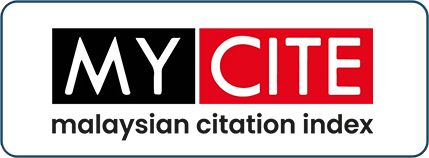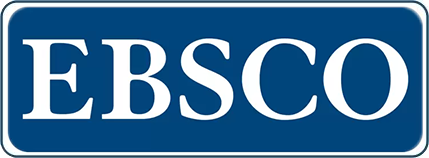The Driving Restriction on Saudi Women: Critical Analysis of Modality in Arabic Online News Discourse
DOI:
https://doi.org/10.33102/jfatwa.vol13no1.137Keywords:
Saudi Women, Driving, Online News, Arabic, CDA, CorpusAbstract
In a society mostly dominated by man, Saudi women faced many restrictions compared to man as they have legally been barred from doing many things by themselves or at least without a male guardian. One of these restrictions is car driving, which was supported by the Islamic pronunciation (fatwa) made by the Grand Mufti of Saudi Arabia. Over the last twenty years, there are a lot of struggles recorded by the mass media between the group demanding more rights for Saudi women and the conservative preserving the fundamental of Saudi's culture based on strict Islamic teaching. Hence, this paper examines the way modern standard Arabic online news of Al-Jazirah (AJ) of Saudi Arabia and BBC Arabic (BBCA) of United Kingdom portrayed the restriction of car driving on Saudi women. This paper aims to analyse the ways that language is exploited in BBCA and AJ to report on struggles around the driving restriction on Saudi women, particularly in the used of modality as one of discourse construction strategy utilised by the news outlets. Therefore, the paper will examine the corpus data consists of online news articles published by BBCA and AJ between 2010 and 2014 using corpus data mining software ‘AntConc 3.1’. The quantitative result of corpus data then will be analysed using a qualitative approach based on the textual-oriented Critical Discourse Analysis (CDA) of Fairclough and media discourse of Ruth Wodak. The result shows that the two news outlets have a different way of portraying the restriction of driving on Saudi women according to their political agendas and ideologies. Hence reveal the hidden agenda and ideologies of Arabic online news discourses around the issue of driving restriction and the Saudi women in general.
Downloads
References
Al-Fawzan, Soleh Fawzan. (2013). Mafasid Qiyadah al-Mar’ah li al-Sayyarat (Harms of Women Driving Cars). https://www.alfawzan.af.org.sa/en/node/15015. 15th August 2018.
Al-Hassan, H.M.(1990). Modality in English and Standard Arabic: Paraphrase and Equivalence. King Saud University Journal 2, 149-166.
Al-Uthaiman, Muhamad Soleh. (2009) Hukm Qiyadah al-Mar’ah li al-Sayyarat (Fatwa on Women Driving Cars). http://www.saaid.net/fatwa/f33.htm. 15th September 2018.
Al-Karooni, D. (1996). The Transfer of Modal Content in Translation. PhD thesis, University of Glasgow.
Anghekescu, N. (1999): Modalities and Grammaticalization in Arabic. In: Suleiman, Y. (ed.): Arabic Grammar and Linguistics. UK: Curzon Press.ATH
Baker, P. (2006). Using Corpora in Discourse Analysis. London: Continuum.
Baker, P. (2008). Sexed texts: Language, gender and sexuality. London: Equinox.
Baker, P. (2010b). Representations of Islam in British broadsheet and tabloid newspapers
Baker, P., & McEnery, T. (2005). A corpus-based approach to discourses of refugees and asylum seekers in UN and newspaper texts. Language and Politics, 4(2), 197-226.
Baker, P., Gabrielatos, C., & McEnery, T. (2013 forthcoming). Discourse Analysis and Media Bias: The Representation of Islam in the British Press. Cambridge: Cambridge University Press.
Baker, P., Gabrielatos, C., Majid KhosraviNik, Krzyzanowski, M., McEnery, T., & Wodak, R. (2008). A useful methodological synergy? Combining critical discourse analysis and corpus linguistics to examine discourses of refugees and asylum seekers in the UK press. Discourse & Society, 19(3),273-306.
Baker, P., Hardie, A., & McEnery, T. (2006). A Glossary of Corpus Linguistics. Edinburgh: Edinburgh University Press.
Bednarek, M. (2006) Evaluation in Media Discourse: Analysis of a Newspaper Corpus. London: Continuum.
Bell, A. and Garrett, P. (eds.) (1998) Approaches to Media Discourse. Oxford: Blackwell.
Breen, J. M. (2007) “Mass media and new media technologies”. In E. Devereux (ed.) Media Studies: Key Issues and Debates. London: Sage.
Brekle, H. (1989) “War with words”. In R. Wodak (ed.) Language, Power and Ideology: Studies in Political Discourse. Amsterdam: Benjamins.
Carter, C., & Steiner, L. (2004b). Introduction to Critical Readings: Media and Gender. In C.
Chilton, P. (2005). Missing Links in Mainstream CDA: Modules, Blends and the Critical.
Chilton, P., & Schaffner, C. (2002). Introduction: Themes and principles in the analysis of political discourse In P. Chilton & C. Schaffner (Eds.), Politics as Text and Talk: Analytic Approaches to Political Discourse (pp. 1-41). Amsterdam: J. Benjamins.
Chouliaraki, L., & Fairclough, N. (1999). Discourse in Late Modernity. Edinburgh: Edinburgh University Press.
Edward Arnold. (1985). Introduction to Functional Grammar, London: IBN FARIS, A. A. (1964). Al-Sa:hibi: fi: fiqhil-lugha. (ed.): Mustafa: Suwaimi and badra:n, A. Beirut.
Fairclough, N. (1985) “Critical and descriptive goals in discourse analysis”. Journal of Pragmatics, 9 (6), 739-763.
Fairclough, N. (1988). Discourse representation in media discourse. Sociolinguistics, 17, 125-139.
Fairclough, N. (1989/2001). Language and Power (2nd ed.). London: Longman.
Fairclough, N. (1992) Discourse and Social Change. Cambridge: Polity Press.
Fairclough, N. (1995a) Critical Discourse Analysis. London: Longman.
Fairclough, N. (1995b) Media Discourse. London: Arnold.
Fairclough, N. (2001) Language and Power. Second Edition. London: Longman.
Fairclough, N. (2003) Analysing Discourse: Textual Analysis of Social Research. London: Routledge.
Fairclough, N. and Wodak, R. (1997) “Critical discourse analysis”. In T. van Dijk (ed.) Discourse as Social Interaction Discourse Studies: A Multidisciplinary Introduction. Volume 2. London: Sage.
Fowler, R. (1991) Language in the News: Discourse and Ideology in the Press. London: Routled Fowler, R. (1996b) “On critical linguistics”. In C.R. Caldas-Coulthard and M. Coulthard (eds.) Texts and Practices. Reading in Critical Discourse Analysis. London: Routledge.ge.
Halliday, M. A. K. and Hasan, R. (1986) Language, Context and Text: Aspects of Language in a Social-Semiotic Perspective. Victoria: Deakin University Press.
Halliday, M.A.K. (1970). Functional Diversity in Language, as seen from a Consideration of Modality and Mood in English. In: Foundations of Language 6, 322-361.
Ibn Baz, Abdullah. (1990). Hukm Qiyadah al-Mar’ah li al-Sayyarh(Fatwa on Women Driving Car). https://binbaz.org.sa/old/28966. 15th August 2018.
Instinct In P. Chilton & R. Wodak. (Eds.), A New Agenda in (Critical) Discourse Analysis: Theory, Methodology and Interdisciplinarity Amsterdam: John Benjamins.
Palmer, F.R. (1986). Mood and Modality. Cambridge: Cambridge University Press.
Perkins, M.R. (1983. Modal Expressions in English. London: Ablex Publishing Corporation.
Talmon, R. (1999). The Syntactic Category maf
Wodak, R and Chilton, P. (eds.) (2005) A New Agenda in (Critical) Discourse Analysis. Amsterdam: Benjamins.
Wodak, R. (2001) “What CDA is about - a summary of its history, important concepts and its developments”. In R. Wodak and M. Meyer (eds.) Methods of Critical Discourse Analysis: Introducing Qualitative Methods. London: Sage.
Wodak, R. (ed.) (1989) Language, Power and Ideology. Studies in Political Discourse. Amsterdam: Benjamins.
Wodak, R. and Meyer, M. (eds.) (2001) Methods of Critical Discourse Analysis: Introducing Qualitative Methods. London: Sage.
Wright, W. (1996) A grammar of the Arabic language, translated from the German of Caspari, and edited with numerous additions and corrections, v.1, 3rd ed., Beirut: Libraire du Liban.
Downloads
Published
Issue
Section
License
The copyright of this article will be vested to author(s) and granted the journal right of first publication with the work simultaneously licensed under the Creative Commons Attribution 4.0 International (CC BY 4.0) license, unless otherwise stated.















